Dear Artist,
In the Spring when I was 12, I accompanied my father on a trip to Brittany, to find a house our family could rent for the summer. In Pont Aven, on Brittany’s south shore, he would paint and write in the same unspoiled postcard, magic with the symbolism and technicolour light that transformed Paul Gauguin a hundred years earlier. In 1886, the 38 year-old Gauguin had recently left his career as a Paris stock broker to paint full-time; at first squaloring in a 3rd floor walk-up in the 15th Arrondissement until it became untenable, then moving, with his family to Rouen. Eventually his wife, Mette would return to Copenhagen with their five children, citing an irreconcilable diversion of values.
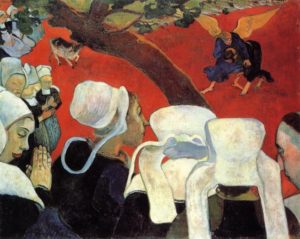
The Vision after the Sermon (Jacob wrestling with the Angel), 1888
Oil on canvas
74.4 x 93.1 cm
by Paul Gauguin (1848-1903)
At the time, a place cheaper than Rouen was the artist colony at Pont Aven; a picturesque summering village favoured by American art students and French academic painters. Gauguin, tousled, found he was a better fit in the countryside. Joined by his painting buddies Émile Bernard and Paul Sérusier, they embarked in a new direction, inspired and riffing on the illustrative dancers and flattened planes of Edgar Degas and the easy, caricatured drawings of Randolph Caldecott, whose work was being used for a popular Breton guidebook. Caldecott had become something of a sensation amongst the increasingly avant-garde art colonists — his ubiquitous illustrations towering as a kind of jumping off point for anyone aching for painterly revolution.
After trips to Panama and Martinique, Gauguin rejected what he felt was the symbolic meaninglessness of Impressionism and the vapid, rejection-laden scene in Paris. He returned to Pont Aven under the influence of folk art, Japanese prints, and the Medieval enameling technique cloisonné — where areas of flat coloured glass are separated by the black outlines of their soldering wire. From all of this pictorial rebellion burbled a longing to try to convey, in paint, the essence of objects.
Representation gave way to streamlined expression. Brittany, in this moment, was a perfect microcosm of French civilization and village life that symbolized a wider paradigm of beliefs, humanity and our role in nature. Within ten years, Gauguin had committed permanently to the freedom he attributed to a life in French Polynesia, and emerged as the father of Synthetism — a whole-hearted rejection of Impressionism in favour of synthesizing objects based on the memory and one’s feelings about them. Paul Gauguin died in Atuona, Marquesas Islands, in 1903. He was 54.
Sincerely,
Sara
PS: “Art = a mad search for individualism.” (Paul Gauguin)
Esoterica: Creative influence is available everywhere. I remember the privacy and mystery of the Bois d’Amour, a forested walk along the bubbling Rive Aven in the solo and daydreaming imagination of my 12 year-old self. I remember the reproductions of the paintings made there, displayed in the village historical museum, alongside Breton lace and the wooden sabots clogs, now artifacts of the paintings; our collective record of another’s creative revelation. The secret to influence is that you’ve got to draw upon it and then work it into something to call your own. “Art,” wrote Gauguin, “is either plagiarism or revolution.” A good route is to respectfully and selectively borrow while never asking for a recipe. Your job, to write your own, is performed daily at the altar of your elbow grease. Make a note of your influence; be it your back garden, or a lifetime of inquiry into a subject or theme, or your rejection of someone else’s something, then remove your reference, and paint it from memory. “It is better to paint from memory, for thus your work will be your own,” wrote Gauguin. “Seek art and abstraction in nature by dreaming in the presence of it.”
Have you considered a Premium Artist Listing? With each letter, an artist is featured at the bottom of this page. The Premium Artist Listings are a means of connecting artist subscribers through their work. Proceeds from each listing contribute to the production of The Painter’s Keys.
“Oh mysterious world of all light, thou hast made a light shine within me, and I have grown in admiration of thy antique beauty, which is the immemorial youth of nature.” (Paul Gauguin)
Featured Workshop
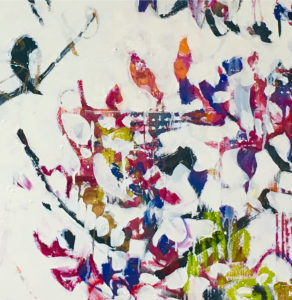 Join Ellie Harold for “Intuitive Painting: Permission to Paint Expressively,” designed especially for mature women artists of all skill levels who wish to explore this medium for soulful exploration. The retreat provides attractive accommodations (your own room!) along with lightly structured activities for centering, relaxation and low stress art-making. You’ll have plenty of free time to muse, paint, write and reflect while enjoying the colors, textures and flavors of San Miguel. This Retreat has the potential to transform not only your art but your life! You’ll return home with a specific art “care plan” to assure support for further creating. Details at www.EllieHarold.com.
Join Ellie Harold for “Intuitive Painting: Permission to Paint Expressively,” designed especially for mature women artists of all skill levels who wish to explore this medium for soulful exploration. The retreat provides attractive accommodations (your own room!) along with lightly structured activities for centering, relaxation and low stress art-making. You’ll have plenty of free time to muse, paint, write and reflect while enjoying the colors, textures and flavors of San Miguel. This Retreat has the potential to transform not only your art but your life! You’ll return home with a specific art “care plan” to assure support for further creating. Details at www.EllieHarold.com.
Featured Artist
Los Angeles-based artist Lisa Chakrabarti works in a variety of media: oils, acrylics, pastels, watercolors, graphite and colored pencils. Focusing on a style she calls “romantic naturalism” – impressionism based largely on subjects in the natural world – her works have found their way into galleries in Los Angeles, Florida, Colorado and New York. In 1995, after being introduced to sumi-e and Chinese ink painting by Asian friends, Lisa became captivated by the apparent freedom and subtlety of this ancient medium. This shift in focus has informed her work ever since.

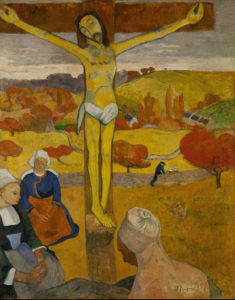
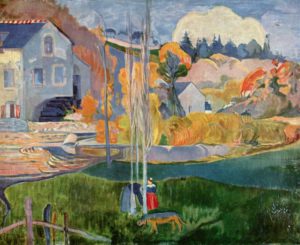
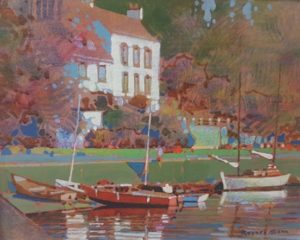
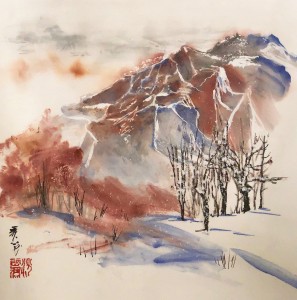



9 Comments
What a wonderful story. Thank you Sara. It made me think of 1989 and 1990. I had the privilege to be around this beacon of light for one year in Saskatoon. Canada. She was a nurse. She was in her 20’s. Her light shone most when she was painting. She expressed that she needed to explore the arts much further and this would require her ending her solid career in nursing. She felt that she needed to move to the United States to fullfill all the elements within her. That she needed to listen to her heART. Like Louise, I too was at a stage in my life where I needed to turn the page in my own life’s chapter. If your interested in what became of Louise Schroeder, please visit her website: http://louiseschroeder.com
“Art must come from the heART.”
– Miles Patrick Yohnke, https://yohnke.com
Just as I was thinking, ” What did your father paint there?” there it was. Great juxtaposition!
I love the-quote, respectively admire and abs orb without asking for the recipe(or something along those lines)
Thank you, Sarah, I learned a lot from your post.
You gave good coverage of the courage evidenced in his seeking.
Gauguin’s life story is very interesting and makes one feel sympathy on a grand scale
for his wife, six children and the teenagers he bedded.
In scanning down your article, looking at the paintings by Gauguin, I came to the last one and thought his painting improved there! But it was your Dads painting!! Lol enjoyed it!
I looked at your Dad’s painting thinking it was Paul’s and thought how amazing it was he could paint that from memory. :) Lots of good food for artistic thought in this letter, Sara. Lately I have been contemplating how my use of the mass amounts of photos I have collected over the years are now my soul source of reference for painting. I am not able to go out to “the field” like I was before, not to take photos or paint there, which leaves me wondering if using references collected over the years is as valid as using a reference that is current. Now, after reading Paul Gauguin’s theory, I think I am as valid an artist as I ever was. What is stored in our memory files isn’t in those photos, it’s in the brush.
‘vapid, rejection-laden scene in Paris’. This sounds interesting but I don’t know what this means, can you elaborate please?
Allows players to drill difficult areas without starting Geometry Dash SubZero again.